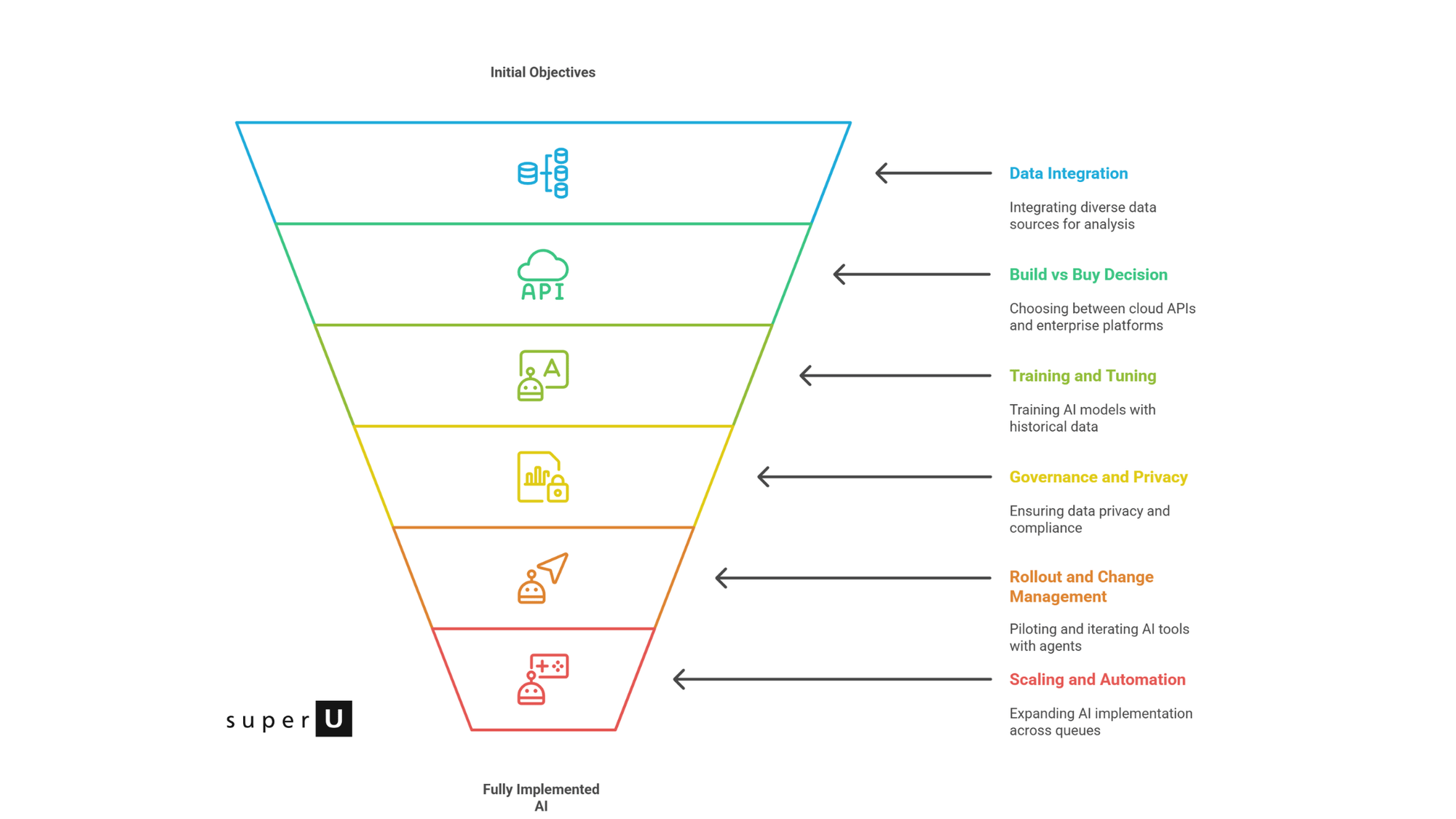Why Conversations Are the New Data Mine
Today: machine transcription, natural language processing (NLP), and sentiment models analyze every single interaction in minutes. The result is conversation analytics a discipline that turns raw customer talk into a strategic map of friction points, revenue clues, and coaching moments.
What Exactly Is Conversation Analytics?
At its core, conversation analytics uses AI/ML to transcribe and mine voice, chat, email, and social interactions for sentiment, intent, and thematic patterns. It goes beyond simple keyword spotting by detecting emotion, silence gaps, escalation risk, and compliance breaches across channels.
How the Technology Works (Under the Hood)
| Layer | What Happens | My Field Notes |
|---|---|---|
| Automatic Speech Recognition (ASR) | Converts audio to text, producing a timestamped transcript. | Accuracy jumps from 80 % to 92 %+ when you feed the engine domain-specific terms worth the training time. |
| Natural Language Processing | Tokenizes, tags parts of speech, detects entities & sentiment. | Look for models supporting code-switching if your agents mix languages (common in APAC). |
| Intent & Topic Models | Clusters phrases into “billing issue,” “feature request,” etc. | Start with unsupervised clustering; add rule-based overrides for compliance flags. |
| Dashboards & Alerts | Surfaces insights via BI tools or live agent assists. | Real-time alerts saved our telecom client 35 s per call by nudging agents when churn cues spiked. |
These pipelines now ride GPU-accelerated infrastructure or managed services like AWS’s generative-AI stack, which cuts experimentation time dramatically.
Five Business Wins You Can Expect
1. Razor-sharp Voice of Customer (VoC) – Aggregate top pain points in days, not quarters. My SaaS client slashed “unknown” ticket tags by 60 % after feeding conversation themes into Jira.
2. Agent Coaching at Scale – Flag empathy gaps, overtime monologues, or missed upsell cues; auto-generate call scorecards.
3. Compliance & Risk Shield – Detect PCI, HIPAA, or GDPR violations instantly; auto-mute recordings when credit-card digits surface.
4. Product Feedback Loop – Surface feature requests straight from customers; one retail brand found a pattern (“wish it came in black”) and added the color sales jumped 8 %.
5. Cost & Efficiency Gains – Identify calls that could be deflected to self-service; Authenticx calls this eliminating the “Eddy Effect,” a healthcare-specific measure of friction.
Roadmap for Implementation of Conversation Analytics

Stage : 0. Set Objectives
Key Tasks: Pick 2-3 KPIs (NPS improvement, handle-time reduction).
Pitfalls to Avoid: “Analyze everything” is not a goal.
1. Data Plumbing
Integrate telephony/CCaaS feeds, chat logs, email archives.
Forgetting time-zone normalization wreaks havoc in multi-geo dashboards.
2. Choose Build vs Buy
Evaluate cloud APIs vs. enterprise platforms (e.g., NICE Enlighten) based on budget & in-house ML talent.
DIY without ASR expertise often stalls at a 70 % accuracy ceiling.
3. Train & Tune
Feed historical transcripts, tag ~500 interactions for supervised learning.
Skipping minority accents can bias results.
4. Governance & Privacy
Mask PII, set retention policies, seek legal sign-off.
GDPR fines hurt encrypt transcripts at rest.
5. Rollout & Change-Mgmt
Pilot with 20 agents, gather feedback, iterate dashboards.
Agent pushback drops when you frame the tool as a coach, not a watchdog.
6. Scale & Automate
Roll to remaining queues, connect to BI stack, schedule weekly VoC reports to execs.
Keep retraining cadence (monthly for volume >100 k interactions).
Measuring Success – KPIs & Benchmarks
- First Contact Resolution (FCR): +5 pp uplift within 60 days is a solid early win.
- Average Handle Time (AHT): 8–12 % reduction once agents adopt real-time prompts.
- Silence Percentage: Healthy calls stay below 5 %. Spike indicates knowledge gaps or system lag.
- Sentiment Delta: Track average sentiment change from start to finish; aim for +0.3 pts on a –1 to +1 scale.
Tie these metrics back to dollars: one B2C insurer linked a 0.2 sentiment-point rise to a 3 % policy-renewal lift. Numbers speak louder than dashboards.
Common Pitfalls
| Pitfall | Fix |
|---|---|
| “Set-and-Forget” Models | Deployment tanked after slang evolved (“That’s sick!” flipped sentiment). We instituted quarterly lexicon refreshes. |
| Overcounting Negativity | Agents often mirror upset customers, skewing sentiment. We now weight caller tone higher than agent tone. |
| Data Isolation | Conversation insights sat in a silo; support couldn’t email product. We plugged transcript themes into the company’s Jira board problem solved. |
| Loss of Human Context | AI flagged “refund” as negative; finance team celebrated it as retention save. We added context tags (Billing_Positive) to refine reporting. |
Frequently Asked Questions
1. Which channels can I analyze?
Voice, chat, email, WhatsApp any channel you can capture as text.
2. Real time or post call what’s better?
Real-time helps coaching; post-call is best for trend mining. Most mature programs run both.
3. How accurate is transcription for noisy calls?
With a tuned vocabulary and noise-reduction, expect 90-94 % on wide-band audio.
4. Do I need data scientists?
Off the shelf platforms minimize coding, but you’ll still want an analyst to interpret trends.
5. What about GDPR/PCI?
Use redaction APIs and store transcripts in-region; restrict access via role-based controls.
Conclusion
Conversation analytics isn’t a silver bullet but wielded well, it becomes the compass guiding product roadmaps, agent training, and CX investments. Start small, measure relentlessly, and let the voice of the customer speak for itself.
Book a demo and watch Superu turn calls into clear insights
Start for Free – Create Your First Voice Agent in Minutes


